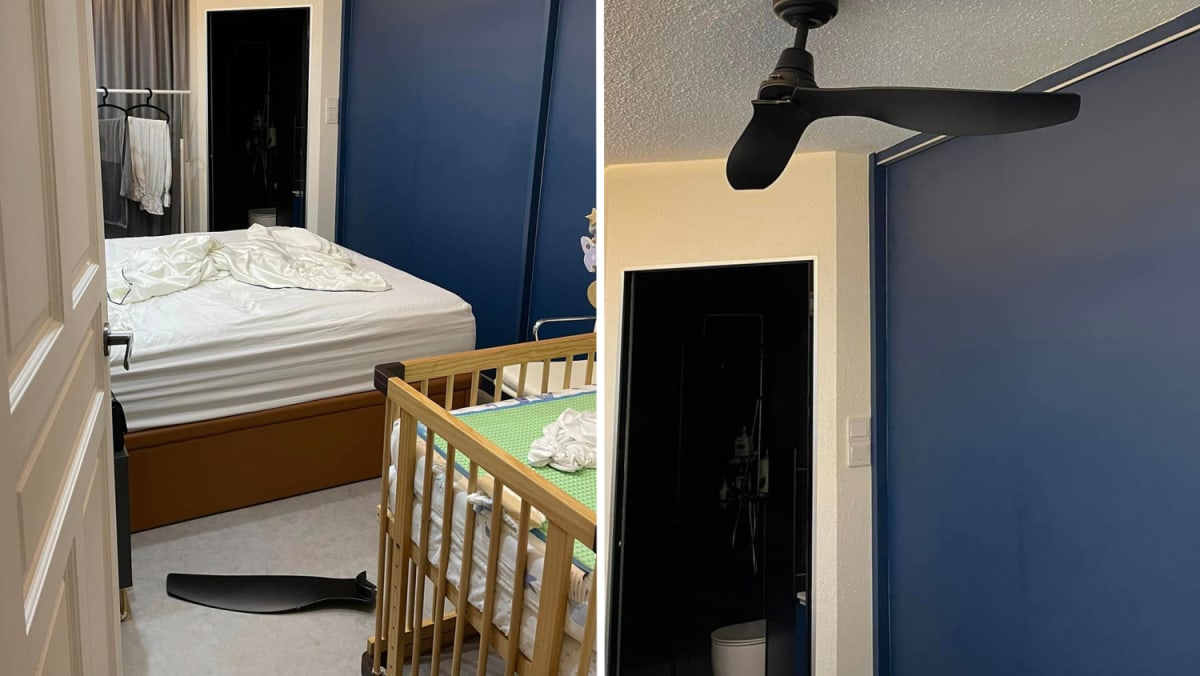Mr Ong said that he reached out to the manufacturer Fanco Fan Marketing on April 1 and it sent a technician “with the intention of installing new fan blades for (the family)”.
However, upon inspecting the fan, company personnel informed Mr Ong that the fan was “off-centre and too close to (his) wardrobe”, which had caused the fan blade to break off.
He had bought the fan in November 2021 from Shopee and had it installed by a third-party contractor, he said. But Fanco technicians had visited his home twice to service his ceiling fans for different issues and had never pointed this out to him.
He has since replaced his fans with new ones from Japanese brand KDK, and claimed: “When we asked the KDK installers if the fan’s position is too close to the wardrobe, they said no.”
Mr Ong added that the family had rejected Fanco’s replacement fan blade and asked for compensation in cash instead, but “haven’t heard from them ever since, despite several email chasers”.
In just over a day, his post has attracted 200 reactions, 110 comments and 150 shares from netizens in Singapore, who responded with both concern and criticism. Commenting has since been turned off for the post.
While some fellow Fanco users were worried about their own ceiling fans, a majority of the comments felt that from Mr Ong’s photos, the fan was indeed too close to his wardrobe.
They chided him for blaming the company, saying that he should blame the third-party installer instead for not ensuring a minimum distance from nearby fixtures.
According to Fanco’s website, one needs to consider leaving a space of roughly 45cm to 60cm from the tip of a ceiling fan’s blades to the wall, L-box false ceiling or cabinet. KDK’s website puts this minimum clearance at 60cm to 80cm.
“It is true the fan (being) too near to the wardrobe can cause it to be under extra stress due to the turbulent air created when the blades spin near the wardrobe,” read the top comment. “You should blame the installer rather than the servicing guys.
“The servicing guys won’t tell you about the issue since they (would) assume the installer has told you about the risk and you accepted it.”
Agreeing, others spoke of a “wobbly effect” on fan blades if installed too close to obstacles, which would put the blades under more pressure and decrease the efficiency of their air circulation.
One user offered a more succinct explanation: “(The) right side’s inflow of air is imbalanced with the left side’s inflow, this is aerodynamics.
“You don’t believe everyone’s word here. Likewise, you also cannot just listen to (the) KDK electrician’s word.”
Others pointed out that the fan in question also appeared to be “way too big” for the room, with one user saying: “This long blade type is meant for the living room while there are shorter ones for bedrooms.”
The user added that the fan design meant it would tend to sway slightly in strong winds and possibly hit the wardrobe with one or all of its blades while spinning.
“Overall, the fault lies both with the sales staff who did not advise the homeowners to choose shorter blades for bedrooms and the homeowners themselves for not doing basic research,” he concluded.
TODAY has reached out to Mr Ong and Fanco for comment.













.jpg?itok=-PYTzXLW)